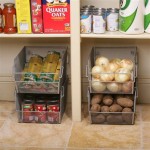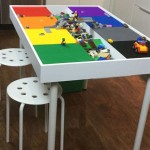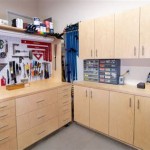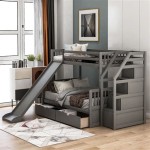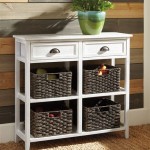DIY Bed Frame with Storage Cubes: A Practical and Stylish Solution
A bed frame is a fundamental piece of furniture in any bedroom. Beyond simply providing a platform for a mattress, it significantly contributes to the overall aesthetic and functionality of the space. While commercially available bed frames offer various styles and features, constructing a DIY bed frame with storage cubes presents a compelling alternative for those seeking customization, affordability, and efficient space utilization. This article elucidates the process of building such a bed frame, examining the design considerations, materials required, step-by-step construction, and potential modifications for personalized needs.
The rationale for choosing a DIY bed frame with storage cubes rests upon several key advantages. Firstly, it allows for complete control over dimensions, tailoring the frame precisely to the mattress size and available bedroom space. This is particularly beneficial in rooms with unconventional layouts or limited square footage. Secondly, integrating storage cubes eliminates the need for separate dressers or nightstands, maximizing vertical space and minimizing clutter. This is especially valuable in smaller apartments or bedrooms where efficient storage is paramount. Finally, building a DIY frame offers significant cost savings compared to purchasing a pre-made alternative, especially if utilizing reclaimed or repurposed materials.
Design Considerations and Planning
Before commencing the actual construction, meticulous planning is crucial for a successful outcome. This phase involves determining the desired dimensions, storage configuration, material selection, and overall aesthetic. The mattress size is the primary determinant of the frame's dimensions. Standard mattress sizes (Twin, Full, Queen, King, California King) are readily available, and the frame should be built to accommodate the chosen mattress with a slight allowance for bedding. The height of the bed frame is another important consideration, influenced by personal preference and accessibility. A lower frame creates a more modern, minimalist look, while a higher frame facilitates easier entry and exit, particularly for individuals with mobility limitations.
The configuration of storage cubes is a key element of the design. Consider the types of items that will be stored within the cubes – clothing, books, linens, or personal belongings. This will influence the size and number of cubes required. A symmetrical arrangement of cubes on either side of the bed provides a balanced aesthetic, while an asymmetrical arrangement can be used to create visual interest or accommodate specific storage needs. The depth of the cubes should be sufficient to accommodate the items being stored, but not so deep as to make accessing items in the back difficult.
Material selection significantly impacts the appearance, durability, and cost of the bed frame. Common choices include solid wood (pine, oak, maple), plywood, MDF (Medium-Density Fiberboard), and reclaimed wood. Solid wood offers superior strength and aesthetic appeal but is generally more expensive. Plywood provides a good balance of strength and affordability, while MDF is a cost-effective option for painted finishes. Reclaimed wood offers a unique, rustic aesthetic and is an environmentally conscious choice. The choice of material should be based on budget, aesthetic preferences, and desired level of durability.
A detailed sketch or CAD (Computer-Aided Design) drawing is highly recommended to visualize the final product and ensure accurate material calculations. The drawing should include all dimensions, storage cube locations, and any additional features, such as headboards or footboards. This detailed plan will serve as a roadmap throughout the construction process, minimizing errors and ensuring a cohesive design.
Materials and Tools Required
The specific materials required will vary depending on the chosen design and dimensions. However, a general list of essential materials includes: lumber (for the frame structure and storage cubes), wood screws, wood glue, sandpaper, paint or stain (and associated applicators), wood filler (for filling imperfections), and potentially drawer slides or hinges (if incorporating drawers or doors into the storage cubes). The quantity of lumber required will depend on the size of the frame and the number of storage cubes. Accurate measurements and material calculations are crucial to avoid material shortages or excessive waste.
A comprehensive tool list is equally important for efficient and safe construction. Essential tools include: a measuring tape, a pencil, a circular saw or table saw (for cutting lumber), a drill (with various drill bits and screwdriver attachments), a sander, clamps (for holding pieces together while gluing), a level, and safety glasses. A miter saw can be beneficial for making precise angled cuts, while a jigsaw can be used for cutting curved or intricate shapes. The availability of the appropriate tools significantly impacts the speed and accuracy of the construction process.
Beyond the basic materials and tools, consider the finishing touches that will enhance the overall aesthetic and functionality of the bed frame. These might include drawer pulls or knobs, decorative trim, fabric or upholstery for the headboard, or LED lighting integrated into the storage cubes. These details can elevate the DIY bed frame from a functional platform to a stylish and personalized piece of furniture.
Step-by-Step Construction Process
The construction process typically involves several key steps, starting with cutting the lumber to the required dimensions based on the design plan. Accuracy in cutting is paramount, as even slight discrepancies can accumulate and affect the overall structural integrity and appearance of the frame. Use a circular saw or table saw for straight cuts, and a miter saw for angled cuts. Always wear safety glasses and appropriate protective gear when operating power tools.
Next, assemble the frame structure. This usually involves constructing a rectangular frame that will support the mattress, followed by adding internal supports for the storage cubes. Use wood screws and wood glue to secure the joints. Clamping the pieces together while the glue dries ensures a strong and durable bond. Regularly check the frame for squareness using a level to prevent warping or instability.
Once the frame is assembled, construct the individual storage cubes. This typically involves cutting the lumber into smaller pieces and assembling them into box-like structures. Use wood screws and wood glue to secure the joints. Ensure that the cubes are all the same size and shape for a uniform appearance. Consider adding backs to the cubes for added stability and a more finished look. The cubes can be attached to the frame using wood screws and wood glue, or they can be designed to slide in and out for easy access and cleaning.
After the frame and cubes are assembled, sand all surfaces to create a smooth and even finish. Use a sanding block or an electric sander to remove any rough edges or imperfections. Fill any gaps or imperfections with wood filler and allow it to dry completely before sanding again. This step is crucial for achieving a professional-looking finish.
Finally, apply the chosen finish to the bed frame. This might involve painting, staining, or applying a clear coat. Follow the manufacturer's instructions for the chosen finish. Apply multiple coats, allowing each coat to dry completely before applying the next. Sand lightly between coats to create a smooth and even surface. The choice of finish significantly impacts the overall aesthetic of the bed frame, so carefully consider the color, sheen, and application technique.
After the finish has dried completely, install any additional features, such as drawer pulls, knobs, decorative trim, or LED lighting. Ensure that all screws are tightened and that all components are securely attached. Place the mattress on the frame and test its stability and comfort. Make any necessary adjustments to ensure that the frame is level and supportive. The completed DIY bed frame with storage cubes represents a functional and aesthetically pleasing addition to the bedroom, offering both a comfortable sleeping platform and ample storage space.
Possible Modifications and Customizations
The beauty of a DIY project lies in its potential for customization. The bed frame can be modified and customized to suit individual needs and preferences. One common modification is the addition of a headboard. The headboard can be constructed from wood, fabric, or a combination of materials. It can be attached directly to the frame or designed to be freestanding. The design of the headboard can range from simple and minimalist to ornate and elaborate, depending on personal taste.
Another possible modification is the incorporation of drawers into the storage cubes. Drawers provide a convenient and organized way to store clothing, linens, or other items. Drawer slides can be installed to allow the drawers to slide smoothly and effortlessly. The drawers can be made from wood, plywood, or MDF, and can be finished to match the frame. Drawer pulls or knobs can be added for a more finished look.
Another customization option involves adding doors to the storage cubes. Doors provide a way to conceal items and create a more organized appearance. Hinges can be installed to allow the doors to open and close easily. The doors can be made from wood, plywood, or MDF, and can be finished to match the frame. Latches or magnetic closures can be added to keep the doors securely closed.
Integrated lighting is another popular customization option. LED strip lights can be installed inside the storage cubes to provide ambient lighting or task lighting. The lights can be powered by batteries or plugged into an outlet. A dimmer switch can be added to adjust the brightness of the lights. Integrated lighting adds a touch of sophistication and functionality to the bed frame.
Finally, the bed frame can be customized with decorative elements, such as trim, molding, or carved details. These elements can be used to add visual interest and personality to the frame. The choice of decorative elements should be based on personal taste and the overall style of the bedroom. With careful planning and execution, a DIY bed frame with storage cubes can be transformed into a unique and personalized piece of furniture.

20 Cube Organizer Diy Ideas To De Clutter Your Whole House Storage Bed Frame

Shelf Bed Storage Frame With Cube Bedroom Diy Furniture

Pin On Bed

Storage Cube Bed Frame With Secret Hideout Diy Loft Room Decor

Shelf Bed Storage Diy Bedroom Design Home Decor

Underbed Storage Stained Cubbies This One Is Queen Size Diy Bed Platform Frame

Kallax Queen Storage Bed Ers Diy Platform Frame

Bed S Clever Ideas For A Stylish Bedroom

Diy Bookshelf Raised Bed With Under Storage

Easy Platform Bed Diy Tutorial Using Kallax Shelves Remodelaholic
Related Posts


